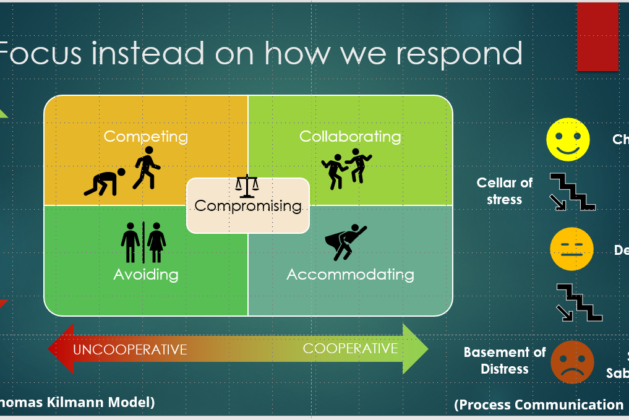Why are agile transformations so hard?
At a point, transformations happen in people’s heads. We can mess about with the organisational structure, create new roles, tell different stories, but the cultural shift happens when people start to believe in what we are doing.
And that’s a big challenge.
In a hierarchical structure, power and status tend to be linked.
In an agile organisation, we want to have empowered teams.
Empowering teams means people in the hierarchy giving up power.
Think about what that means for a second. People have competed with others in order to be promoted to a higher rank in the organisation. Their job title, remuneration and symbols like corner offices, being in “important meetings” and perks like car parks or going to conferences reflect that status.
David Rocks’ work with brain scanning shows that we respond to threats to our status as we do a physical threat(*)
That means there’s a very emotional response when the existing power structure and beliefs about status are challenged. As Jonas Kaplan’s work suggests, evidence and facts will amplify that threat response(**)
This is just how our brains work. No-one likes feeling demoted or stripped of power. It creates a lot of uncertainty, which in turn creates a deeper threat response(*)
And those who have reached positions of power in an organisation are unlikely to simply withdraw from that perceived threat to their identity. They often obtained their roles competitively, and that can reflect their dominant conflict resolution style: win-lose ***
It’s easy to fall into an “Us Against Them” mentality when we see a threat response; we lose a bit of empathy, start name calling (“the frozen middle”) and stop being effective change agents.
We need to be able to move beyond that, engage with empathy and help those who feel fearful and threatened find a pathway forwards. That might mean harnessing that competitive energy for change.
To be an effective coach, however, first of all you will need to build a trust relationship with those people who feel threatened.
TLDR – Reciting the principles that underpin The Manifesto for Agile Software Development, Lean approaches to development and Scrum might not help change. Building a trust relationship might
* SCARF: a brain-based model for collaborating with and influencing others, David Rock



